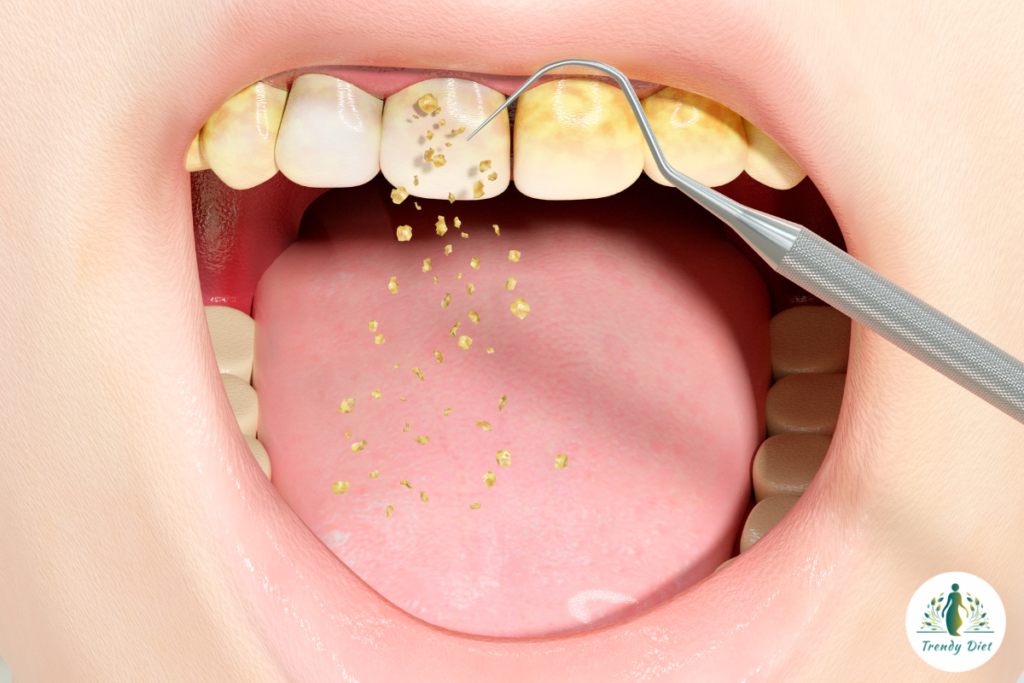Introduction
Maintaining optimal oral hygiene is a cornerstone of a healthy lifestyle. Neglecting proper dental care can lead to the formation of plaque, a sticky film that can culminate in a more hardened form known as tartar or calculus. This article sheds light on calculus bridges, their formation, consequences, and how diligent dental hygiene practices, along with professional intervention, can safeguard against them.
Understanding Calculus Bridges: A Closer Look

From Plaque to Calculus: The Progression
After consuming starchy or sugary substances, a sticky film known as plaque rapidly develops on teeth. This film, comprising bacteria, carbohydrates, and acids, serves as a breeding ground for dental issues if not addressed promptly. Neglecting to brush and floss allows plaque to solidify into tartar or calculus, which can lead to the formation of a calculus bridge.
The Timeline of Tartar Formation
Studies indicate that the transformation of plaque into calculus occurs within a relatively short timeframe, ranging from one to fourteen days. This rapid progression underscores the importance of timely oral care practices in preventing calculus bridges.
The Anatomy of a Calculus Bridge
Visualizing a Calculus Bridge
A calculus bridge manifests as a distinct dark or tan border along the gumline, varying in intensity based on the extent of tartar formation. In severe cases, it may extend deeper into the gum line or further up the tooth surface, potentially posing risks to dental health.
Consequences of Calculus Bridges
A thick layer of calculus not only affects the visual appearance of teeth but also gives rise to several potential dental issues:
-
- Halitosis: The accumulation of tartar and plaque can lead to bad breath, a condition known as halitosis.
-
- Gingivitis: Swollen, red gums and bleeding during dental hygiene routines may signal the onset of gingivitis. Left untreated, it can progress into more severe forms of gum disease.
-
- Receding Gums: Periodontal disease, often associated with calculus bridges, can result in receding gums, creating pockets for bacteria to thrive.
-
- Cavities: Inaccessible microorganisms due to tartar buildup can lead to the development of small holes in tooth enamel, potentially resulting in cavities.
-
- Tooth Decay: Untreated dental calculus may contribute to gum disease, ultimately leading to potential tooth loss.
Seeking Resolution: Dental Intervention for Calculus Bridges
Professional Cleaning for Calculus Removal
Once a calculus bridge forms, simple brushing won’t suffice. It necessitates professional intervention by a dentist or dental hygienist. A thorough cleaning can often eradicate a significant portion of the calculus, restoring dental health.
Addressing Deep-Seated Calculus
In cases where calculus has penetrated below the gumline, specialized procedures such as root planing may be required. Dental hygienists employ tools like dental scalers to meticulously remove hardened plaque and tartar, preventing further complications.
Foods to Eat:
-
- Fruits and Vegetables: These are rich in vitamins and minerals that promote overall dental health. Opt for a variety of colorful options to ensure a wide range of nutrients.
-
- Dairy Products: Dairy products like milk, cheese, and yogurt are high in calcium and phosphorus, which are essential for strong teeth.
-
- Lean Proteins: Foods like lean meats, poultry, fish, and eggs provide protein and important nutrients for oral health.
-
- Fiber-Rich Foods: Foods high in fiber like whole grains, nuts, and seeds stimulate saliva production, which helps cleanse the mouth and neutralize acids.
-
- Green Tea: This contains antioxidants that can help fight bacteria in the mouth.
-
- Water: Staying hydrated is crucial for maintaining saliva production, which helps wash away food particles and reduce plaque buildup.
Foods to Avoid or Limit:
-
- Sugary Snacks and Beverages: These promote plaque formation and increase the risk of tooth decay.
-
- Sticky Foods: Candies, dried fruits, and sticky snacks can adhere to teeth, making them more difficult to clean.
-
- Acidic Foods and Drinks: Citrus fruits, tomatoes, and acidic beverages like citrus juices and soda can erode tooth enamel, potentially exacerbating dental issues.
-
- Hard Foods: Foods like hard candies, nuts, and ice can potentially dislodge the calculus bridge or cause further damage.
-
- Alcohol and Tobacco: These substances can contribute to gum disease, which can exacerbate issues related to calculus bridges.
-
- Excessive Coffee and Tea: These beverages can stain teeth and, if sweetened, contribute to plaque buildup.
Conclusion: Empowering Dental Health Through Vigilance and Professional Care
Maintaining a calculus-free mouth is achievable through diligent dental hygiene practices and regular check-ups. By prioritizing timely oral care, individuals can mitigate the risks associated with calculus bridges, ensuring a healthy and vibrant smile for years to come
When dealing with a calculus bridge, it’s important to be mindful of the foods you consume to maintain oral health and prevent further complications. Here are some recommendations:
